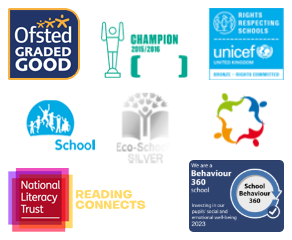At St. Mary’s we support children to develop their early reading skills in many different ways. Children are flooded with a rich literacy curriculum from when they start in Reception. This is delivered through daily phonics lessons, daily whole-class reads, our reading rocket scheme, weekly guided reading sessions and encouraged reading at home.
As a school we value the importance of reading for our children. We realise the importance of reading for children’s academic success and future careers. Due to our understanding of the impact reading has on children’s success it is a core driver throughout our school and we are part of a initiative to promote reading for pleasure across Birmingham. We have developed a ‘St. Mary’s year of reading’ to promote reading for pleasure and increase reading for our children and staff. This has been a very exciting time for the school and we have seen an encouraging change in the children’s attitudes to reading.










